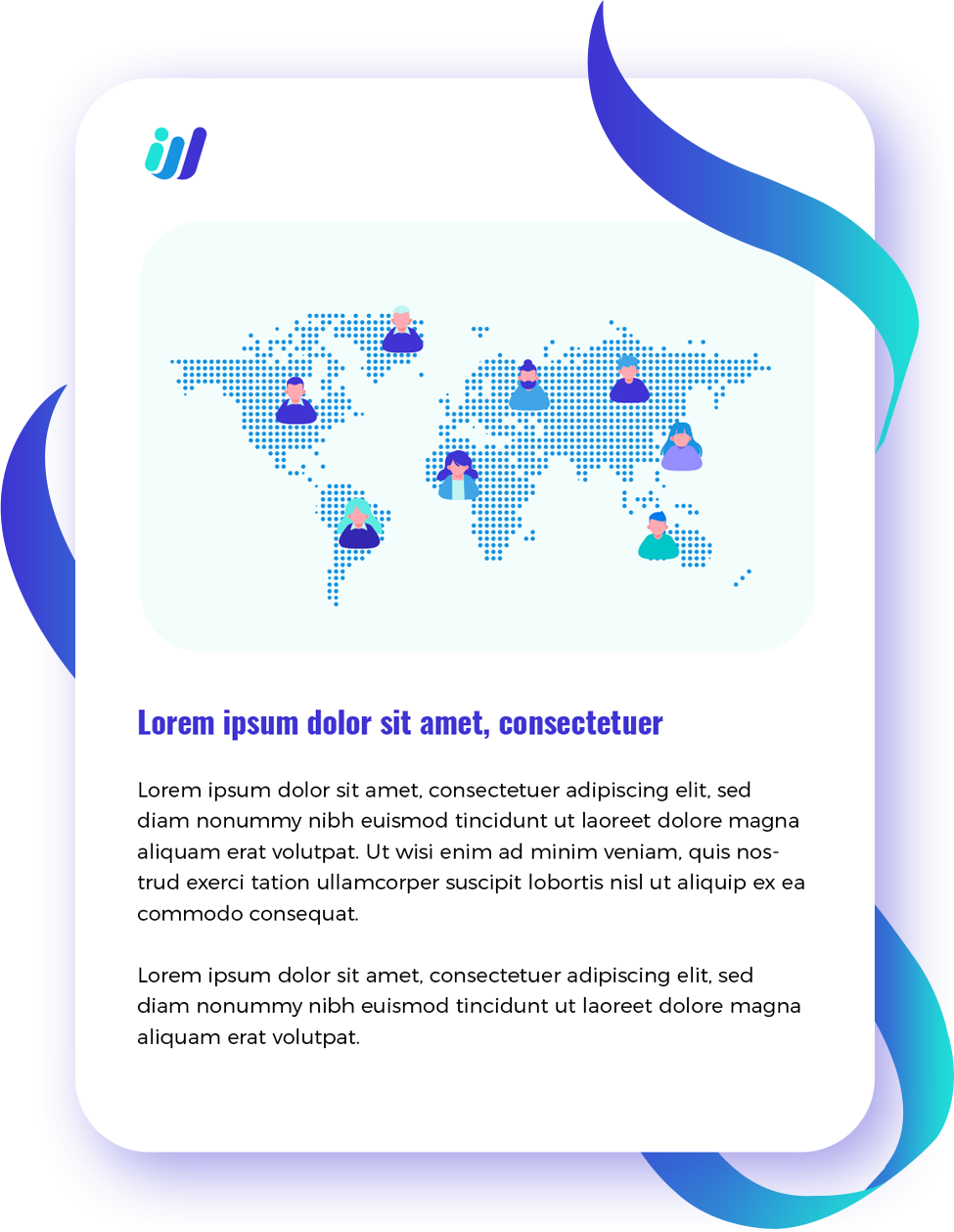In today’s rapidly evolving business landscape, companies are embracing new models of work to foster sustainability and adaptability. One such model gaining traction is the distributed workforce, which allows employees to work from different locations. This innovative approach not only promotes trust and accountability but also fosters camaraderie among team members, even in the absence of physical proximity. In this article, we will explore the concept of a distributed workforce, its advantages, challenges, and strategies for effective management.
Understanding the Distributed Workforce
A distributed workforce is a flexible workplace model that offers employees the freedom to work from various locations. This labor force can consist of fully remote workers, hybrid teams that combine remote and office-based work, or individuals who travel between different locations. This model is particularly popular among tech and Software-as-a-Service (SaaS) companies. For instance, Spotify recently introduced its “Work From Anywhere” initiative, recognizing the benefits of remote work arrangements for employee comfort and productivity.
While often used interchangeably, it’s important to differentiate between a distributed workforce and remote teams. Remote working refers to a way of working, while a distributed workforce encompasses the entire organizational management structure. Companies like Automattic, Zapier, and Buffer have successfully implemented a distributed workforce, operating with trust, perseverance, and a strong sense of company culture.
The Resilience of Distributed Workforces during the Pandemic
While the COVID-19 pandemic forced many organizations to adapt to remote work, distributed workforces were already well-equipped to navigate the challenges. Unlike traditional office-based teams, distributed workforces seamlessly transitioned to remote work, leveraging tools, applications, and software to maintain productivity despite lockdowns, health restrictions, and workplace reconfigurations.
Cultivating Effective Communication in a Distributed Workforce
Communication is a vital aspect of managing a distributed workforce. Open lines of communication are essential for collaboration, project completion, and overall team well-being. To foster effective communication, organizations can utilize a range of tools and techniques.
Open Communication Channels
In a distributed workforce, communication must flow freely in both directions. Overcommunication is often better than silence, as it helps create opportunities for meaningful conversations. Even a simple midday greeting can initiate important discussions and strengthen team dynamics.
Weekly Catch-ups
While not formal meetings, weekly catch-ups provide an opportunity for casual conversations beyond business matters. These catch-ups can be 10-minute chats about personal goals, fostering a sense of connection and camaraderie. Additionally, leaders can use these sessions for one-on-one training and development, providing constructive feedback to help employees improve.
Providing Constructive Feedback
As a manager, it is crucial to give your team time to absorb and internalize the feedback they receive. Recognize their hard work and effort, especially when working on extensive projects. Constructive feedback should be a two-way street, fostering open communication and encouraging team members to provide feedback to their supervisors as well.
Overcoming Challenges in a Distributed Workforce
While distributed workforces offer numerous benefits, they are not without challenges. Organizations must address these challenges proactively to ensure the smooth functioning of their distributed teams.
Time Zone Differences
Working with individuals in different time zones can present a significant challenge. Emails arriving after work hours and meetings held during inconvenient times can confuse and disrupt workflow. Some organizations mitigate this challenge by requiring employees to have a minimum overlap of working hours, allowing them to work at their own pace for the rest of the day.
Productivity Issues
The lack of physical presence and supervision can lead to productivity issues within a distributed workforce. It is essential to address this challenge by leveraging project management apps and communication tools to track progress and ensure accountability. Regular check-ins and clear expectations can help mitigate productivity challenges.
Managing Distractions
Working outside the traditional office environment can introduce a myriad of distractions. Employees may be tempted to prioritize personal tasks or engage in unproductive activities. To combat this, productivity apps can be utilized to block non-work-related websites and programs during work hours, helping employees maintain focus and productivity.
Fostering In-Person Interaction
Virtual communication is essential, but face-to-face interaction remains crucial for maintaining social, mental, and emotional well-being. While physical meetings may be limited due to lockdowns, organizations can encourage employees to leverage communication tools for virtual face-to-face conversations. Regular team-building activities and social events can also foster a sense of connection and belonging within the distributed workforce.
Advantages of a Distributed Workforce
1. Flexible Hours
One of the key benefits of a distributed workforce is the flexibility it provides in terms of working hours. Employees can work at their own pace and choose the most suitable time to complete their tasks, as long as they meet deadlines. This flexibility allows individuals to balance personal responsibilities and work effectively.
2. Reduced Carbon Footprint
With fewer employees commuting to and from the office, distributed workforces significantly reduce carbon emissions. Additionally, the shift towards digital documentation reduces the need for printing, resulting in less paper waste. This environmentally friendly approach aligns with the growing emphasis on sustainability and corporate social responsibility.
3. Access to Global Talent Pool
Geographical barriers are no longer a limitation when building a distributed workforce. Employers can tap into a global talent pool, selecting the best-suited professionals regardless of their location. This diversity fosters a well-cultured and innovative work environment, enriching company culture and driving success.
4. Enhanced Productivity
Trust is the foundation of a successful distributed workforce. When employees feel trusted and empowered to work independently, productivity reaches new heights. Despite potential distractions, employees are motivated to fulfill their responsibilities, resulting in increased overall productivity levels.
Effective Management Strategies for Distributed Workforces
Managing a distributed workforce requires patience, adaptability, and a positive attitude. Employing the following strategies can help facilitate smooth operations and foster growth within the organization.
1. Establish Clear Goals and Expectations
Clear communication of goals and expectations is crucial for a distributed workforce. Providing employees with a comprehensive understanding of their responsibilities and performance metrics helps them stay focused and motivated. Regularly revisiting these goals and providing feedback ensures alignment and continuous improvement.
2. Leverage Technology for Collaboration
Technology plays a vital role in enabling collaboration within a distributed workforce. Utilizing project management tools, communication platforms, and cloud-based storage systems promotes seamless workflow and efficient teamwork. Training employees on these tools and staying updated with emerging technologies is essential for effective management.
3. Foster a Strong Company Culture
Building a strong company culture is vital for a distributed workforce. Encouraging team-building activities, recognizing employee achievements, and facilitating opportunities for social interaction are essential for creating a sense of belonging and camaraderie. Regular virtual meetings and social events can further strengthen bonds within the team.
4. Prioritize Team Communication
Regular and effective communication is the backbone of a successful distributed workforce. Establishing a communication plan that includes regular check-ins, team meetings, and one-on-one sessions is crucial for maintaining productivity and addressing concerns. Open lines of communication ensure that team members feel supported and connected despite physical distance.
Embrace the Future of Work
The rise of distributed workforces marks a significant shift in how businesses operate. By leveraging the advantages of remote work, organizations can cultivate a more flexible, sustainable, and productive work environment. Embracing the distributed workforce model requires effective communication, proactive management strategies, and a strong commitment to fostering a positive and inclusive company culture. As businesses adapt to the changing landscape, embracing this future of work is essential for success in the digital age.
Let us help you find top talents in IT, technical support, digital marketing, and cloud services so you can leverage all the benefits of outsourcing in the new normal. Request a FREE copy of the e-book on Third Wave Outsourcing .



